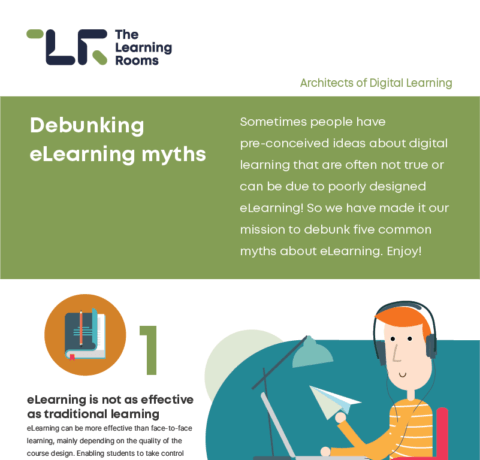Debunking eLearning Myths—Infographic
Many people hold preconceived ideas about digital learning that are often untrue or stem from poorly designed eLearning. Below, we will debunk the most common eLearning myths.
5 Myths About eLearning
1. eLearning Is Not As Effective As Traditional Learning
eLearning can be more effective than traditional face-to-face learning, depending on the quality of the course design. When students have the opportunity to take control of their own learning and when courses include multimedia content, interactive activities, and critical thinking exercises, it can enhance engagement and motivation, ultimately facilitating better learning outcomes.
2. eLearning Is Not Popular
Recent research on the popularity of eLearning challenges the idea that online education is not gaining traction. The Internet Trends 2019 Report revealed significant growth in eLearning courses globally, especially as leading universities transition their offerings online. Last year, the online learning industry generated $46 billion, and economists predict its value will reach $325 billion by 2025.
3. eLearning Is A Solitary Experience
Although eLearning courses are typically completed individually and at your own pace, that does not mean that you can’t interact with others. Online courses often come with live video sessions, discussion forums, and group activities, allowing the learners to interact and collaborate with their peers effectively.
4. Employees Find eLearning Boring
In many workplaces, there is a common belief that eLearning is boring. This perception often arises from employees having previously experienced courses that were too generic and lacked interactivity. However, high-quality eLearning courses that are well-designed and tailored to the audience can offer an engaging and effective learning experience.
5. eLearning Is For The Tech-Savvy
eLearning is often perceived as an option only for tech-savvy learners. Those with limited experience using digital devices may feel that they lack the necessary skills. However, a well-designed eLearning course addresses these concerns by providing guidance at the beginning to help learners understand how to navigate the material. Ideally, such courses should be user-friendly, allowing all learners to easily grasp how to move through the content.

دیدگاهتان را بنویسید